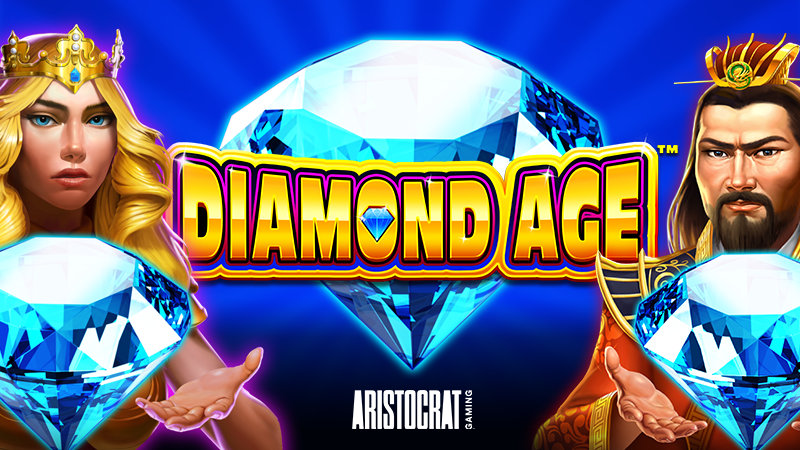CONTENT STRATEGY IN 7 STEPS: A START-TO-FINISH GUIDE
In this post, we’ll dive into what content strategy is, why your business needs a content marketing plan, and what steps you need to take to create your strategy. Plus, we’ll explore some examples of effective content marketing strategies for inspiration.
What is content strategy?
A content strategy is a plan in which you use content (audio, visual, and/or written) to achieve your business goals. A successful content strategy will attract your target audience at every stage of the funnel and keep them engaged even after a purchase.
Say your business goals include increasing brand awareness. To achieve this, you might implement a content strategy that focuses on SEO to increase your website’s visibility on the search engine results pages (SERPs) and drive traffic to your products or services.
New business owners might assume a content strategy is a nice-to-have, but not necessary early on. However, producing high-quality content can be invaluable in building trust with new audiences and succeeding in the long haul.
In essence, a good content strategy is the foundation of your Attract and Delight stages in a buyer’s journey that follows the inbound marketing framework. Along with attracting prospects to your brand, you can leverage a content strategy for sales enablement and customer satisfaction.
Plus, with 70% of marketers actively investing in content marketing, it’s critical that you develop a good content strategy to compete in your industry.
When you develop a content strategy, there are a few questions to answer. Let’s dive into those, now.
1. Who will be reading your content?
Who’s the target audience for your content? For how many audiences are you creating content?
Just as your business might have more than one type of customer, your content strategy can cater to more than one type of user.
Using a variety of content types and channels will help you deliver content that’s tailored to each persona.
2. What problem will you be solving for your audience(s)?
Ideally, your product or service solves a problem you know your audience has. By the same token, your content coaches and educates your audience through this problem as they begin to identify and address it.
A sound content strategy supports people on both sides of your product: those who are still figuring out what their main challenges are, and those who are already using your product to overcome these challenges.
Your content reinforces the solution(s) you’re offering and helps you build credibility with your target audience.
3. What makes you unique?
Your competitors likely have a similar product as yours, which means your potential customers need to know what makes yours better — or, at least, different.
Maybe your main asset is that your company has been established for many years. Or perhaps you have a unique brand voice that makes you stand out from your competitors.
To prove why you’re worth buying from, you need to prove why you’re worth listening to. Once you figure that out, permeate that message in your content.
4. What content formats will you focus on?
To figure out what formats to focus on, you need to meet your audience where they are.
While you may to tempted to launch a podcast since it’s grown so much in the last few years, or launch a YouTube channel, find out first where your audience lives.
Otherwise, you may waste time creating content that either won’t reach your audience or capture their attention.
Once you identify the best formats, start creating a budget to assess what resources you can allocate to execute this strategy.
5. What channels will you publish on?
Just as you can create content in different formats, you’ll also have various channels you can publish to, from your website to social media.
This, again, will reflect where your audience lives. If your audience prefers long-form video content, you may opt to publish your content on YouTube. If you have a younger audience that likes quick content, you may opt for TikTok and Instagram.
We’ll talk more about social media content strategy in the step-by-step guide later in this article.
6. How will you manage content creation and publication?
Figuring out how you’ll create and publish all your content can be a daunting task.
Before you execute, it’s important to establish:
- Who’s creating what.
- Where it’s being published.
- When it’s going live.
In a small team, this may be easy enough as you may be the sole decision-maker. As your company grows, you may need to collaborate with several content teams to figure out an effective process.
Today’s content strategies prevent clutter by managing content from a topic standpoint — as explained in the video above. When planning a content editorial calendar around topics, you can easily visualize your company’s message and assert yourself as an authority in your market over time.
Why Marketers Need to Create a Content Marketing Strategy
Content marketing helps businesses prepare and plan for reliable and cost-effective sources of website traffic and new leads.
If you can create just one blog post that gets a steady amount of organic traffic, an embedded link to an e-book or free tool will continue generating leads for you as time goes on — long after you click “Publish.”
The reliable source of traffic and leads from your evergreen content will give you the flexibility to experiment with other marketing tactics to generate revenue, such as sponsored content, social media advertising, and distributed content.
Plus, your content won’t just help attract leads, it will also educate your prospects and generate awareness for your brand.
How to create a content strategy framework
Now, let’s dive in to learn the specifics of how to create a content marketing plan. Curious how our former HubSpot Head of Content SEO Aja Frost put together our content strategy? Here it is.

1. Define your goal.
What’s your aim for developing a content marketing plan? Why do you want to produce content and create a content marketing plan?
Know your goals before you begin planning, and you’ll have an easier time determining what’s best for your strategy.
Download this goal planning template for help figuring out the right content goals.
2. Conduct persona research.
To develop a successful plan, you need to clearly define your content’s target audience — also known as your buyer persona.
This is especially important for those who are starting out or are new to marketing. By knowing your target audience, you can produce more relevant and valuable content that they’ll want to read and convert on.
If you’re an experienced marketer, your target may have changed. Do you want to target a new group of people or expand your current target market? Do you want to keep the same target audience? Revisiting your audience parameters by conducting market research each year is crucial to growing your audience.
Featured Tool: Buyer Persona Generator
3. Run a content audit.
Early on, most brands start with blog posts. If you want to venture out into different formats, you can run a content audit to assess your top-performing and lowest-performing content. Then, use that information to inform which direction you take next.
If you’ve been in business for a while, you should review your content marketing efforts and the results from it in the last year.
Figure out what you can do differently in the upcoming year and set new goals. Now is a great time to align your team’s goals with the rest of your organization’s goals.
Whatever stage you’re in, a content audit will help you determine what resonates best with your audience, identify gaps in your topic clusters, and brainstorm fresh content ideas.
4. Choose a content management system.
A few vital parts of content management include content creation, content publication, and content analytics.
You want to invest in a CMS to create, manage, and track your content in an easy and sustainable way.
With the HubSpot CMS, you can plan, produce, publish, and measure your results all in one place.
Another popular CMS is WordPress, to which you can add the HubSpot WordPress plugin for free web forms, live chat, CRM access, email marketing, and analytics.
5. Determine which type of content you want to create.
There are a variety of options out there for content you can create, from written content like ebooks and blog posts to audio content like podcasts.
In the next section, we’ll discuss some of the most popular content formats marketers are creating, including some tools and templates to get you started.
6. Brainstorm content ideas.
Now, it’s time to start coming up with ideas for your next content project.
Here are some tools to get the juices flowing.
1. Feedly
The Feedly RSS feed is a wonderful way to track trendy topics in your industry and find content ideas at the same time.
You start by telling the software what topics you’re most interested in and its AI tool will do the rest.
You won’t need to scour the internet to find new content ideas anymore. Instead, you can go through your curated list, compiled from news sites, newsletters, and social media.
2. BuzzSumo
Want to discover popular content and content ideas? This company offers a number of market research tools, one of which uses social media shares to determine if a piece of content is popular and well-liked.
This information helps you see which content ideas would do well if you were to create content about them.
3. BlogAbout
Get your mind gears going with IMPACT’s blog title generator. This tool works a bit like Mad Libs, but instead of joke sentences, it shows you common headline formats with blanks where you can fill in the subject you have in mind.
This brainstorming technique helps you put general ideas in contexts that would be appealing to your target audience. Once you have a headline you like, BlogAbout lets you add it to your “Notebook” so you can save your best ideas.
4. CoSchedule Headline Analyzer
You can get blog post ideas for an entire year with HubSpot’s Blog Ideas Generator. All you need to do is enter general topics or terms you’d like to write about, and this content idea generator does all the work for you.
This tool analyzes headlines and titles and provides feedback on length, word choice, grammar, and keyword search volume.
If you have an idea in mind, run a few title options through the Headline Analyzer to see how you could make it stronger, and to move your idea further along in the brainstorming process.
This is a great tool to use when you want to see where you’re at with your website and SEO efforts. The Website Grader grades you on vital areas of your website performance and sends you a detailed report to help you optimize.
With this tool, you can figure out how to make your website more SEO-friendly and discover areas of improvement.
7. Publish and manage your content.
Your marketing plan should go beyond the types of content you’ll create – it should also cover you’ll organize your content.
With the help of an editorial calendar, you’ll be on the right track for publishing a well-balanced and diverse content library on your website. Then, create a social media content calendar to promote and manage your content on other sites.
Many of the ideas you think of will be evergreen (i.e.: just as relevant months or years from now as they are today). That being said, you shouldn’t ignore timely topics either. While they may not be the bulk of your editorial calendar, they can help you generate spikes of traffic.
Most people count on incorporating popular holidays, like New Year’s, in their marketing efforts, but you don’t have to limit yourself to these important marketing dates.
If there are niche holidays that might appeal to your audience, it could be worth publishing content on your blog or on social media. Check out this ultimate list of social media holidays — keep an eye on it when you’re planning your calendar.
Types of Content Marketing
These are the eight most popular types of content marketing you can create for your readers and customers.
1. Blog Posts
Blog posts live on a website and should be published regularly in order to attract new visitors.
Posts should provide valuable content for your audience that makes them inclined to share posts on social media and across other websites.
We recommend that blog posts be between 1,000 and 2,000 words in length, but you should experiment to see if your audience prefers longer or shorter reads.
2. Infographics
Infographics can organize and visualize data in a more compelling way than words alone.
These are great content formats to use if you’re trying to share a lot of data in a way that is clear and easy to understand.
Featured Tool: 15 Free Infographic Templates

If you’re ready to get started, get our templates for creating beautiful infographics in less than an hour.
3. Videos
Videos are a highly engaging content medium and are shareable across social media platforms and websites alike.
Videos require a bigger investment of time and resources than written content, but as visual content continues to offer big ROI, it’s a medium worth exploring.
Featured Tool: Free Video Marketing Starter Pack + Templates
4. Social Media
Once you’ve been regularly publishing content on your own site for a while, start thinking about a social media strategy to distribute your content on social media.
In addition to sharing your content, you can also repurpose it into new formats and create original content specifically for each platform.
Posting on social media is pivotal to amplifying your brand’s reach and delivering your content to your customers where you know they spend their time. Popular social networks include:
When launching a business account on any of the social networks above, adjust your content to the platform.
On Instagram, for example, users want aesthetically pleasing visuals. With feeds, IGTV, Stories, you have a lot of room to play with. TikTok, on the other hand, appeals to a younger demographic that wants trendy, funny, and creative short-form video.
Do some market research to discover which platforms your buyers are on, and mold your content to their expectations.
It takes time, organization, and creativity to grow a successful content marketing strategy. From building the foundation of your content marketing plan to adding tools to better manage your content, setting up your strategy for the new year won’t be a hassle if you follow the steps and explore the resources here.
Click here to sharpen your skills with the help of HubSpot’s free content marketing workbook













